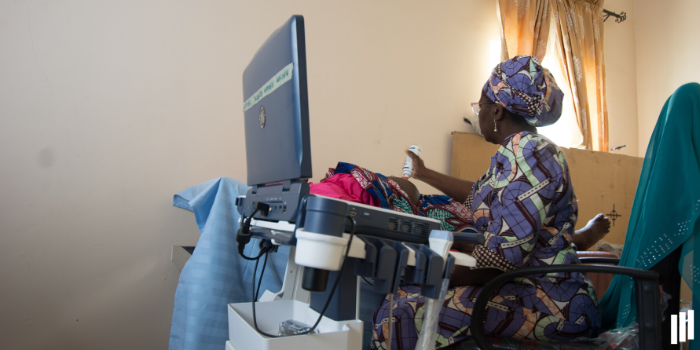This blog was cross-posted on Medium.
Women and girls displaced by conflict or crisis face a host of sexual and reproductive health-related risks. These include sexual and gender-based violence; sexually transmitted infections (STIs), including HIV; unintended pregnancy; and complications of pregnancy and childbirth. Indeed, lack of sexual and reproductive health (SRH) care is one of the leading causes of death, disease, and disability among displaced women and girls of reproductive age.
Twenty-five years ago, the Women’s Refugee Commission (WRC) published findings from eight humanitarian settings that revealed a dearth of SRH services in displacement settings. We found that individuals, whether in a refugee camp, a detention center, or a village hosting asylum seekers, did not have access to contraception, safe abortion care, or services to prevent STIs and HIV. There were virtually no programs to prevent or respond to sexual violence.
At the time, there was no agreement as to whether it was even feasible to provide sexual and reproductive health services in emergency response. However, that began to change several months later, when some 20,000 leaders, experts, and activists met in Cairo for the International Conference on Population and Development (ICPD). They recognized, for the first time, the fundamental sexual and reproductive rights of refugees and internally displaced persons, including adolescents.
As we celebrate Human Rights Day (December 10), we have an opportunity to assess how far we’ve come in making the human right to sexual and reproductive health care for refugees and internally displaced persons a reality.
25 years of progress
Last month, WRC joined thousands of colleagues at ICPD25 in Nairobi. The conference acknowledged that remarkable progress has been made over the past 25 years. However, the dream of universal access to the full range of sexual and reproductive health information, education, and services has not been achieved.
So, where do we stand, specifically regarding access to SRH care in refugee settings?
Hundreds of organizations and thousands of individuals are collaborating to make sure that everyone who needs SRH care at the onset of an emergency gets the priority services they require. They’re also working to ensure the transition to comprehensive SRH services happens as soon as possible. WRC plays a key role in these efforts. Importantly, donors, UN agencies, and nongovernmental organizations (NGOs) are recognizing how important it is to address SRH in humanitarian settings. They are listening to women and girls, and progressively improving the availability of and funding for SRH services.
Specific areas where we’ve seen progress include access to post-abortion care and expanded HIV prevention, particularly regarding the transmission of HIV from mothers to their babies and access to antiretroviral therapy for persons living with HIV/AIDS.
We still have a way to go
Yet, much remains to be done. We have yet to successfully scale SRH services to reach all crisis-affected individuals, including the most marginalized, such as adolescents, persons with disabilities, and persons with diverse sexual and gender identities.
Women and girls from Africa to Asia to Europe have told us they’re desperate for programs to prevent and respond to sexual and gender-based violence, including emergency contraception. They demand prevention and treatment of STIs, including HIV. They want long-acting and permanent methods of family planning to prevent unintended pregnancies, as well as access to safe abortion services to the full extent of the law. And they need emergency obstetric and newborn care to save the lives of pregnant women and newborn babies.
A range of agencies are responsible for different aspects of SRH in refugee settings. If we hope to ensure that all crisis-affected individuals can exercise and enjoy their sexual and reproductive health and rights, even in the most restricted and challenging settings, we must be sure to avoid duplication, waste, and missed opportunities.
Putting local organizations and individuals at the center of emergency response
The time has come for humanitarian agencies to fundamentally reconsider their relationship with crisis-affected individuals. For far too long, they have failed to recognize the existing capacities of individuals and civil society in crisis-affected and host populations. More can and must be done to assess, leverage, and build on existing capacities of communities’ health work forces, social service providers, and broader civil society networks, both before and after an emergency. Our ability to effectively respond to crises depends on our ability to engage every resource and responder, starting with the very people who are impacted at the onset of a crisis.
We must redouble efforts to support the leadership and resilience of national and local organizations and individuals to champion and protect sexual and reproductive health and rights from preparedness through response, recovery, and development.
Twenty-five years ago, WRC was passionate about bringing the human right of refugees to SRH to the world’s attention. We’re still passionate, and we won’t give up.
Because crisis-affected women and girls, men and boys deserve nothing less.


